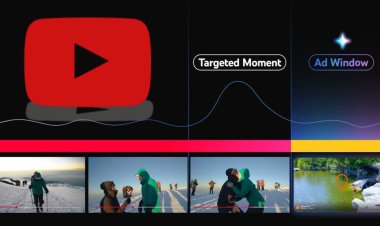Social Media Platforms Engage in Fierce E-commerce Advertising Rivalry
Evolution of Internet Habits Fuels Intense Competition Among Emerging Social Media and Tech Giants in India

During the recent Google for India conclave, which serves as Alphabet's flagship event in the country, notable emphasis was placed on partnerships and new features tailored for online merchants. Google highlighted its offerings across various products, with a special focus on YouTube and Search.
Statistics from Hootsuite predict that ad spends on social media will surpass $173 billion in 2022, and projections for 2023 indicate ad spending on social media to exceed $268 billion. Among the top social media platforms globally in 2022 were Facebook, YouTube, and Instagram, as per Statista, with Meta-owned platforms also making a significant impact. However, Meta's dominance is facing challenges as tech giants like Google, Amazon, Facebook, and Apple (GAFA) intensify competition to secure a larger share of the social media advertising pie.
Rohan Chincholi, Managing Partner – Digital at Havas Media India, notes that the digital landscape is evolving, with data-driven decision-making and precise targeting becoming paramount. The expansion of reach and the generation of sales have become expensive endeavors. Advertising effectiveness now hinges on precise targeting and the skillful utilization of client data to activate relevance.
Anshuman Misra, Sr. VP – eMarket at LS Digital, acknowledges Meta's dominance in Indian e-commerce advertising but highlights the shifting landscape due to the evolving browsing habits of India's expanding internet user base. As more players enter the market, competition among emerging social media and tech giants has intensified. YouTube, with its substantial user base and compelling video content, is making significant strides in e-commerce advertising.
In light of India's evolving internet landscape, Meta faces the challenge of retaining its user base as platforms like Netflix and Hotstar gain traction for advertising. Moreover, with the potential Reliance-Disney deal on the horizon, further disruption in the industry is anticipated.
According to Statista, the social commerce market in India was estimated to be worth seven billion U.S. dollars in 2022, projected to increase to 84 billion U.S. dollars by 2030. However, considering India's rapid online population growth and economic expansion, with a billion people online by 2025 and a doubled economy by 2030, the potential figure is even higher.
Predicting a clear winner in this dynamic landscape remains challenging. The trajectory will depend on how platforms adapt to evolving market dynamics and consumer preferences. To stay ahead, Meta must adjust to the evolving needs and preferences of the Indian market and continue to innovate its advertising offerings.
Smaller players entering the e-commerce market face unique challenges but can adopt measured approaches to attract business and acquire new users. Targeted approaches, regional focus, vernacular content, and collaboration with local businesses can provide smaller players with insights and access to specific markets. Building personalized relationships with local customers, delivering exceptional customer service, and utilizing owned social platforms are strategies to compete effectively.
Local players are making strides in e-commerce through content strategies, establishing owned channels, and leveraging the influence of micro and nano influencers to connect with their audience.

 Sumit Rawat
Sumit Rawat 










